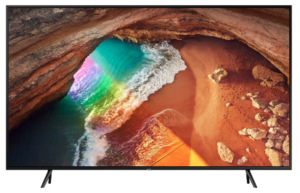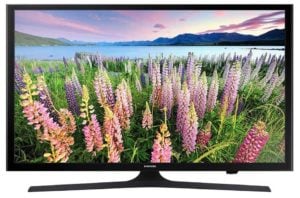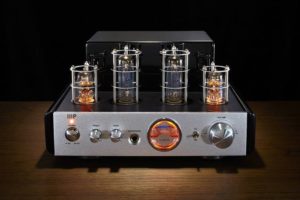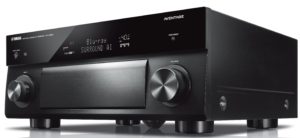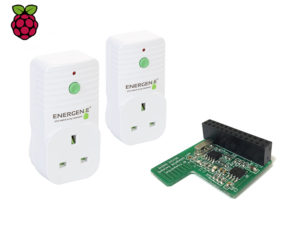"Region Free" or "Multi-Region" Blu-ray players are Blu-ray players which have been converted to work in any region of the world. These devices also play DVDs from any region in the world, including regions 0, 1, 2, 3, 4, 5, 6, 7, and 8. They are built to play Blu-rays from any Zone / region in the world, including Zone A, Zone B and Zone C. Our top 10 best players are divided into different categories- not everyone's Blu-ray needs are necessarily the same, so we have outlined below what we believe to be the best 10 Blu-ray players available right now for varying needs.
Best Value: LB BP165 / BP250 Region free blu-ray player
This LG blu-ray player is perfect for those that already have streaming built into their TV or another streaming device such as Amazon's Fire Stick or a Roku. Most modern televisions have wifi and streaming built-in regardless, so the feature is really not necessary in blu-ray players for many people. The upgraded Region Free version of this player will play any region DVD, Any region Blu-ray and offers fantastic picture and sound quality. It doesn't play the UBD 4K discs- for that there is a step up player we will talk about below. But other than those missing features, this player is really the best value you are going to find. It's versatile and plays many different formats of DVDs, CDs, and other discs and content from USB. Customer reviews have also been excellent for this device. Its durability is true and tested, as it has been on the market for some time now and they haven’t made many changes to this model.
Pros:
- Upgraded version is region free for DVD and Blu-ray
- Excellent picture with 1080p up-conversion
- Plays video and Audio from USB
- Durable Construction
- Easy to connect and use
Cons:
- Does not have wifi
- Does not feature streaming
- Is not a 4K UBD Ultra HD blu-ray disc player
------------------------------
Best Overall player: Panasonic DP-UB9000 Region Free 4k UBD blu-ray player
The Panasonic DP-UB9000 is a fantastic device that is arguably the best high-end replacement for the famously excellent Oppo Blu-ray players. With arguably the best 4K HDR quality available, tone mapping, and impeccable audio quality. This is a player meant for those who want an Oppo replacement, which is to say that it is a player for those who want a top of the line Blu-ray player that will last them a very long time. The only real downside to this player is that it is not universal- some formats are not supported, specifically SACD or DVD-Audio discs.
Pros:
- The closest thing we have to a new Oppo Blu-ray player
- Fantastic audio quality
- Build quality reduces vibration and interference
- Plays numerous audio and video formats
- Perfect for audio/videophiles
Cons:
- Doesn't support SACD or DVD-Audio
- The price might be outside of the budget of some
------------------------------
Best Value region free 4K UBD Ultra HD blu-ray disc player: LG UBK80 Region free UBK 4k Ultra HD blu-ray player
With the ability to play Ultra HD, 3D, and Standard Blu-ray discs, the LG UBK80 is a versatile machine for what you are paying. Full 4K support, along with HDRand high-end surround sound format support, really drive home what a bargain this device is. At $250, the UBK80 provides essentially everything one could want from a new Blu-ray player, without breaking your wallet.
Pros:
- Support for Ultra HD/4K, 3D, and Standard Blu-rays
- Dolby Atmos, Dolby TrueHD, and DTS Master Audio support
- HDR Support
- Fantastic price point
Cons:
- Does not support video streaming services
------------------------------
Best Value Region free 4K Player with Streaming: LG UBK90 Region Free UBD 4K Ultra HD blu-ray player with wifi
The LG UBK90 is a Blu-ray player that is very similar to the UBK80, but with one key difference: It has wi-fi support built into the device. As a result, the UBK90 is the perfect Blu-ray player for those who are interested in the UBK80, but really wish it offered streaming support.
Pros:
- Support for Ultra HD/4K, 3D, and Standard Blu-rays
- Dolby Atmos, Dolby TrueHD, and DTS Master Audio support
- HDR Support
- Fantastic price point
- Wi-fi/Streaming support
- Overall an excellent player, there isn't much bad to say about it.
Cons:
- Doesn't have some of the less common streaming apps, but has all major ones.
- Lacks a few high-end features such as tone mapping and HDR conversion.
------------------------------
Best Value 4K Player player with Dolby Atmos and Streaming: Sony UBP-X700 Region free blu-ray player with Dolby Atmos and Streaming
The Sony UBP-X700 offers silky smooth 4K streaming/playback, fantastic HDR, and a small stature which will please those who would prefer to not have a larger, clunkier device sitting around their living room. This device also offers high-end audio playback through Dolby Atmos, a very welcome feature for those who want to have the full cinematic experience.
Pros:
- 4K Streaming/Playback
- HDR
- Dolby Atmos Audio Playback
- Small Size
- Great value
- Has nearly all the video features one would desire
- Great colors
Cons:
- Sound is decent, but not the same as the much more expensive Yamaha and Panasonic options
------------------------------
Best Region Free WiFi player: Sony BDP-S3700 Region free blu-ray player with wifi streaming
The Sony BDP-S3700 is a great, affordable way to turn any TV into a Smart TV. On the surface, it is a standard Blu-ray player; at closer examination, it actually features a great number of apps which will allow one to stream movies and television shows to one’s TV without any additional devices. As a result, this is a great alternative to purchasing a smart TV if one would rather purchase a larger, non-smart TV while retaining all of those features. Similarly, phone mirroring is a unique feature that is extremely useful; users can simply pull content up on their phones and ‘push’ things to the screen in front of them. This is perfect for parties or just casual viewing.
Pros:
- Wi-fi support, streaming
- Numerous apps available
- Excellent player for most setups
- Durable, great for playing DVDs and Blu-rays of any region
Cons:
- Only outputs up to 1080p video
------------------------------
Best Region Free 4k Upconversion player: Sony BDP-S6700 Region free blu-ray player with 3D wifi streaming and 4K upconversion
The Sony BDP-S6700 is essentially a high-end version of the BDP-S3700. It fixes the problems which existed with the former, specifically it being only able to access 1080p content. Instead, this model supports 3D and 4K content, with 4K upscaling for non-4K content. This is a huge bonus, as it still provides all of the fantastic content that the former model did. The 4K support is only for upscaling content to 4K, which should be kept in mind when purchasing.
Pros:
- 3D Support
- 4K/UHD Upscaling for non-4K content
- Great streaming options
- Bluetooth upport
Cons:
- Does not actually play 4K content, only upscales
------------------------------
Best Region Free player with Excellent Audio & composite audio outputs: Yamaha BDP-S681 Region Free Blu-ray Player with 4K Upscaling
The Yamaha BDP-S681 features 4K Upscaling for non-4K video as well as composite audio outputs for A/V receivers. As a result, it can be used with a wide variety of home audio setups, making it a great entry-level device for a home theater. This is definitely a device made for audiophiles, constructed with the intent of being used alongside a Yamaha A/V receiver of your choice. That said, it will work just fine with other brands.
Pros:
- 4K Upscaling
- Fantastic audio opportunities
- Composite audio output
- FLAC, high-quality audio file support
Cons:
- Lacks true 4K due to emphasis on audio quality
------------------------------
Best Region Free 3D player: LG BP550 Region Free 3D Blu-ray Player
For its price, the LG BP550 is a great option for anyone who wants 3D Blu-ray support without spending much money. While it lacks some of the fancier options that more expensive Blu-ray players might offer, it allows for a budget device that still lets you have the 3D experience you crave at home. It loads discs quickly and has a very responsive interface, and built-in Wi-fi lets you stream videos to your non-smart television.
Pros:
- 3D support at an unbeatable price
- Built-in Wi-fi and streaming support
- Loads quickly
- Low latency, responsive menus
Cons:
- Lacks support for some high end formats such as 4K/UHD
------------------------------
Best Region Free 3D 4K Player with Streaming and Dolby Atmos: Sony UBP-X800M2 Region Free Multi Region 4K UHD Blu-ray Player
The Sony UBP-X800M2 provides a great all-around device with both quality audio and video output. The sound provided by Dolby Atmos is crisp, and the video quality is always clean and stable. The addition of Wi-fi is, as always, welcome even if not needed. A particularly interesting feature to this device is that it offers Bluetooth output for audio, allowing one to use Bluetooth headphones as opposed to a speaker setup. This is great for those who want to watch movies without disturbing those around them, or those who just have nice headphones and would prefer to use them for their viewing experience. While it may not have the best audio or video options on this list, the UBP-X800M2 is sure to please with its options.
Pros:
- Dolby Atmos support
- Bluetooth audio
- Crips video output
- Wi-fi streaming
- HDR to SDR conversion
- Tone mapping
- Great value for all of its features
Cons:
- Dolby Vision's menu, as well as HDR10+, can be a bit clunky. You need to understand the settings before making major changes
------------------------------
Overall, these are what we consider to be the ten best region free Blu-ray players on the market for 2020-2021. You can’t go wrong with any of these players, as each has its own unique perks which makes it worth considering.
Visit 220-Electronics.com for all of your region free Blu-ray player needs! At 220-Electronics, each device is personally customized to work with all codes and in all regions- guaranteed. We have excellent customer service and can help you to decide which player is best for you, ensuring you are happy with your final purchase.

